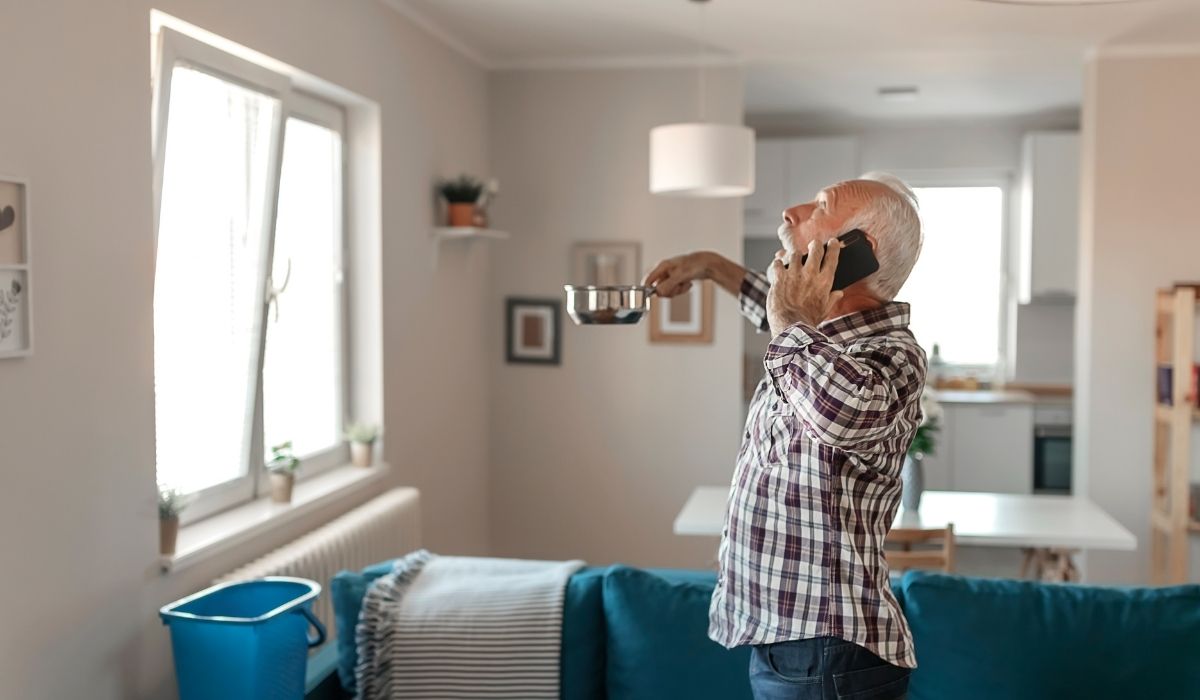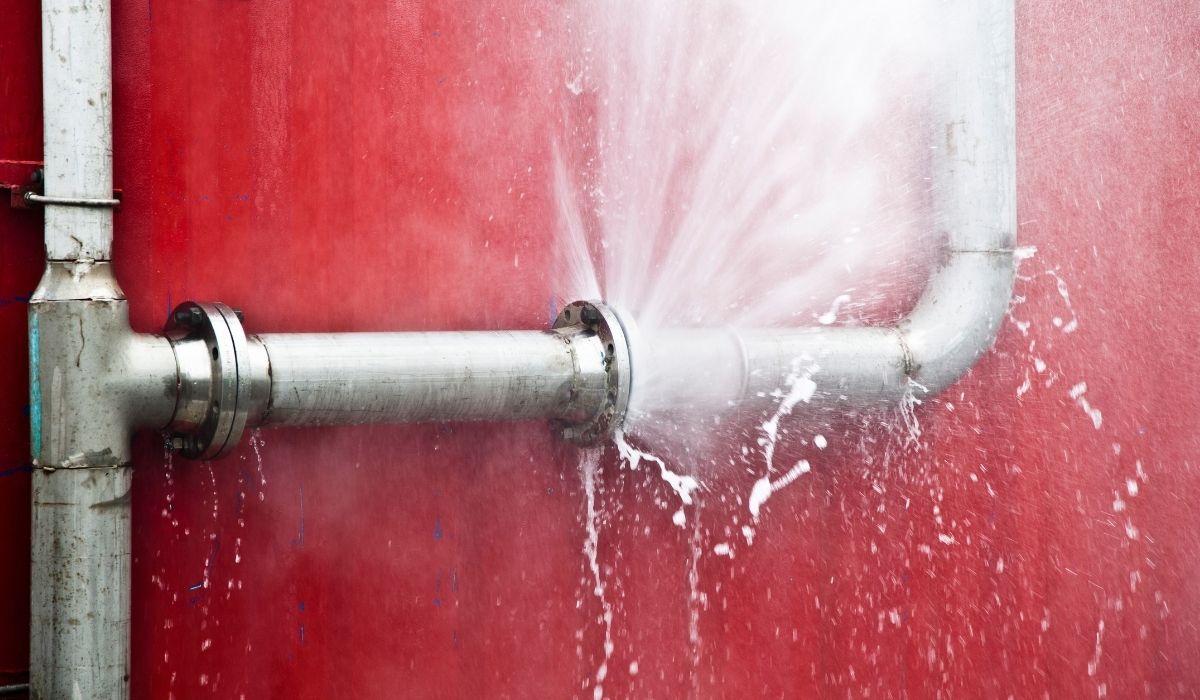How Do You Remove Mold from Bathroom Ceiling | Easy Steps
Mold on bathroom ceilings is a common problem caused by poor ventilation, excessive moisture, and damp conditions. So, how do you remove mold from bathroom ceiling? Understanding how to safely and effectively remove mold is essential to maintaining a clean, healthy environment. This guide will walk you through practical steps to address mold growth and prevent future infestations.
Understanding Mold on Bathroom Ceilings
What Causes Mold on Bathroom Ceilings?
Mold thrives in warm, damp areas. Poor ventilation, high humidity levels, and frequent hot showers create the perfect environment for mold. Ceiling mold often results from excess moisture, water damage, or inadequate ventilation.
Common Types of Mold Found on Bathroom Ceilings
Several types of mold can grow on ceilings. Black mold, one of the most toxic mold species, poses significant health risks. Other types of mold include surface mold and persistent mold that affects porous surfaces like textured ceilings or bathroom walls.
Health Risks of Mold Infestation
Mold can cause respiratory issues, chest tightness, and other health problems, especially for people with weakened immune systems. Black mold symptoms can be severe, leading to chronic lung conditions or respiratory illnesses.
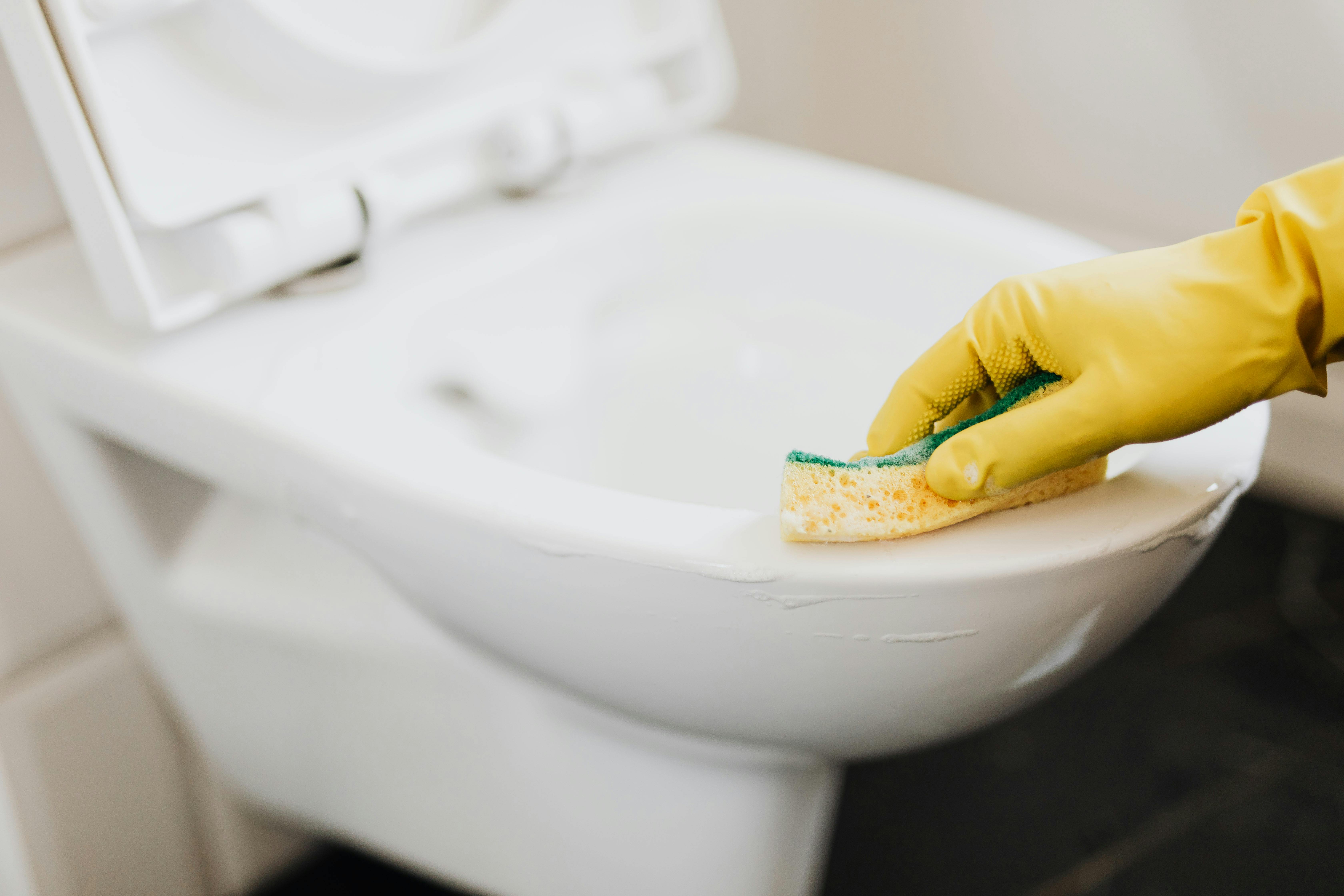
How to Remove Mold From a Bathroom Ceiling
Gather Cleaning Supplies
You’ll need the following items to remove mold:
- Spray bottle
- White vinegar
- Baking soda
- Mild detergent
- Scrub brush
- Protective gear (rubber gloves, N-95 mask, eye protection)
- Clean cloth or microfiber cloths
Step 1: Prepare the Area
Ensure proper ventilation by turning on the exhaust fan or opening windows. Lay paper towels or a drop cloth on the floor to catch debris. Wear protective gear to prevent exposure to mold spores.
Step 2: Apply a Mold Cleaning Solution
Mix a natural solution of one part white vinegar to one part warm water in a spray bottle. Spray the affected area thoroughly. Let the solution sit for 1-2 hours to allow the acetic acid to penetrate the mold stains.
Step 3: Scrub the Mold
Use a soft-bristled scrub brush or sponge to scrub the mold. For tough stains, sprinkle baking soda over the area and scrub again. Rinse with clean water and wipe dry with a microfiber cloth.
Step 4: Use a Bleach Solution for Stubborn Mold
If vinegar and baking soda aren’t enough, use a diluted bleach solution. Mix one cup of bleach with one gallon of water and apply it using a spray bottle. Avoid mixing bleach with ammonia-based cleaners, as it produces toxic fumes.
Step 5: Clean and Dry the Area
Wipe the area with a clean cloth and allow it to air dry completely. Ensure all excess water is removed to prevent future mold growth.
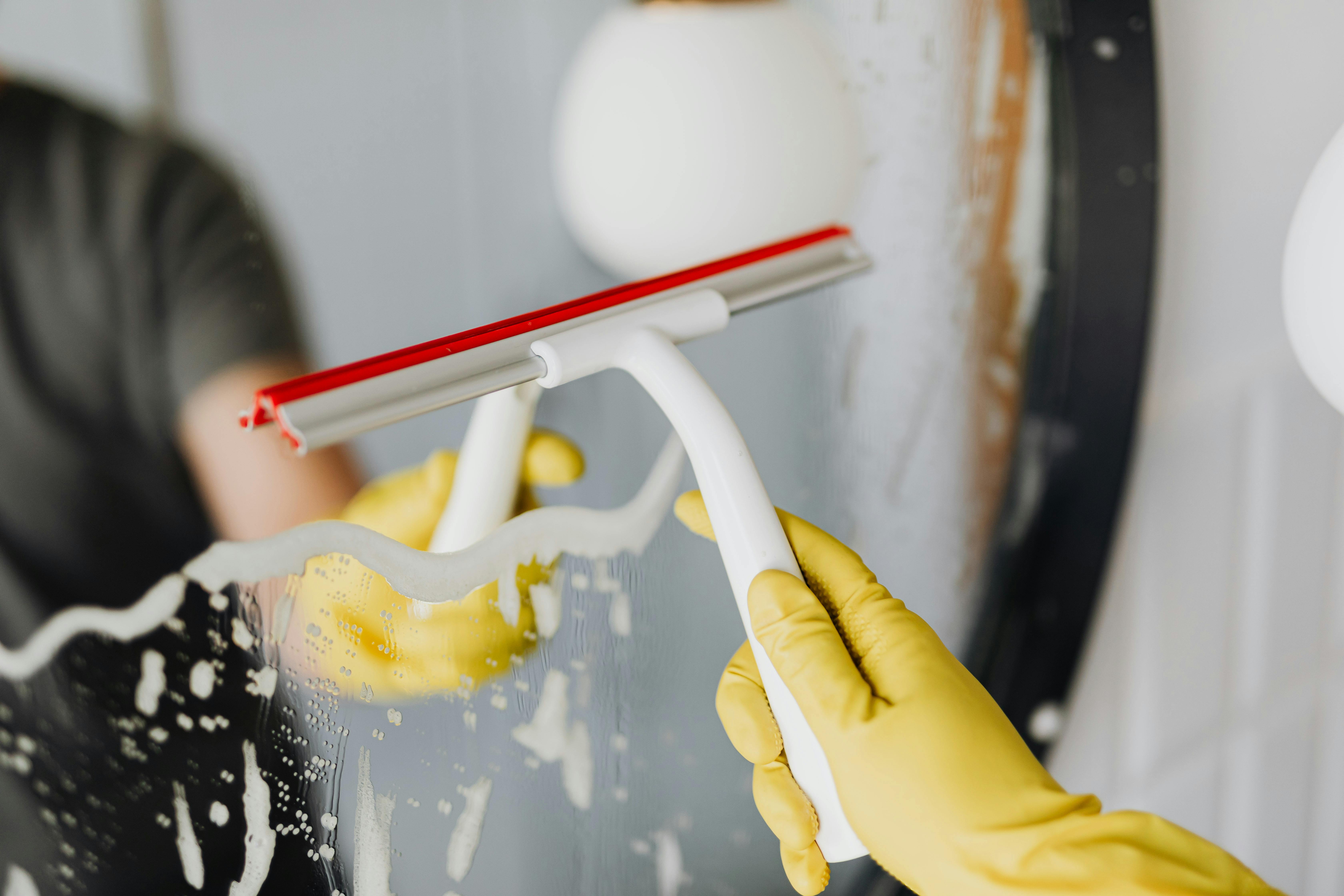
Preventing Mold Growth on Bathroom Ceilings
Improve Ventilation
Install an exhaust fan or open windows to allow air circulation. In windowless bathrooms, consider using moisture absorbers or a dehumidifier to control humidity levels.
Reduce Excess Moisture
Wipe down wet surfaces like shower stalls, ceilings, and bath rugs after use. Avoid leaving damp towels in the bathroom.
Use Anti-Mold Products
Apply anti-mold paint or an anti-mould paint additive to create a barrier against mold growth. Use natural mold removers or mould sprays for regular maintenance.
Maintain a Regular Cleaning Schedule
Clean your bathroom weekly with mild detergents or common household products like baking soda and tea tree oil. Ensure all porous materials are kept dry.
Dealing with Persistent Mold
If mold persists despite your efforts, consult affordable experts or professional mold remediation services. They can address active mold growth, black mold spores, and high airborne mold levels.
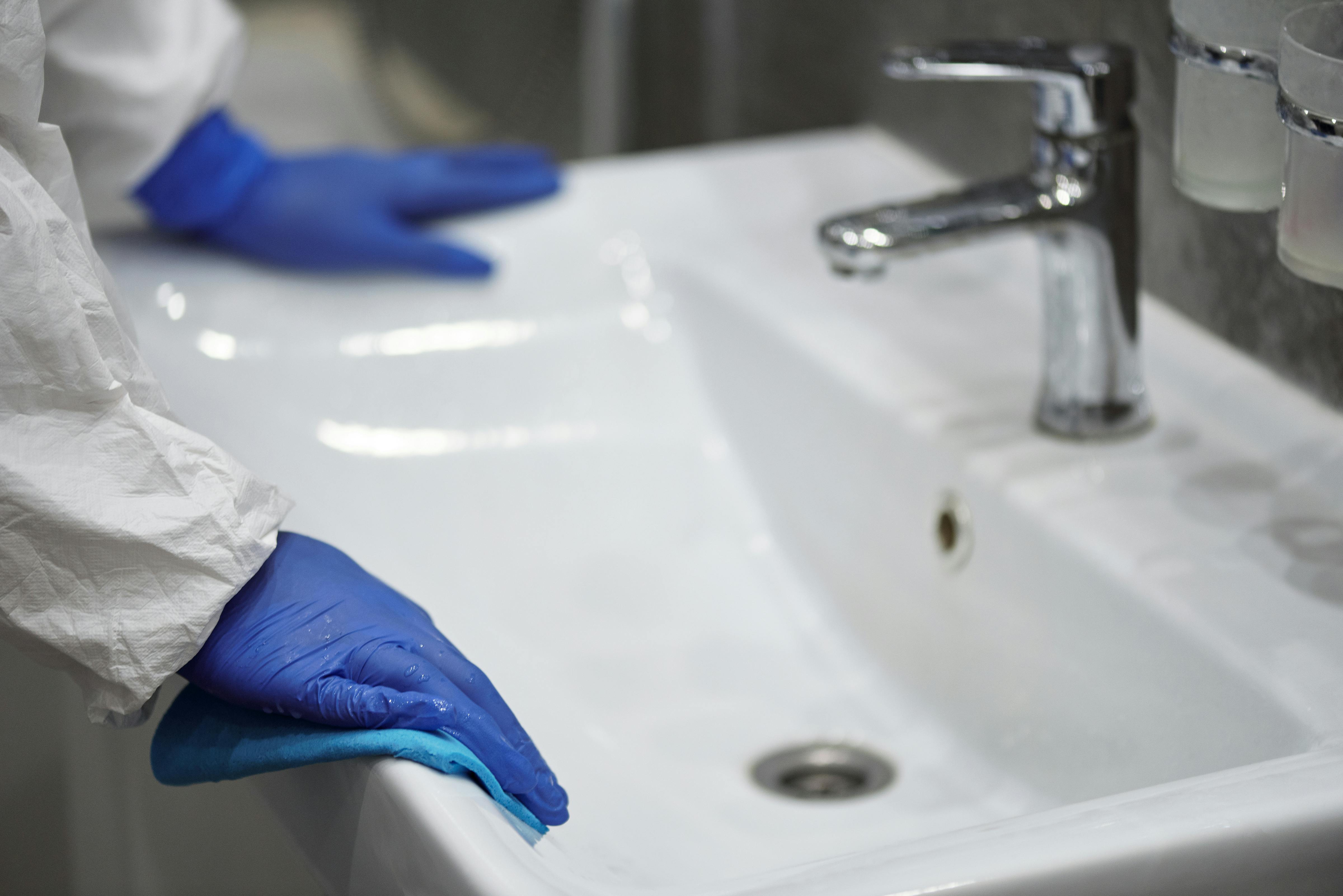
FAQ
1. What is the best natural solution to clean mold?
White vinegar is a natural mold remover with antifungal properties. Baking soda combined with water is also effective.
2. Can mold on the bathroom ceiling cause health issues?
Yes, mold can cause respiratory problems, allergic reactions, and chronic health conditions, especially toxic black mold.
3. How can I prevent future mold growth on my ceiling?
Ensure proper ventilation, reduce excess humidity, and use anti-mold products like anti-mold paint or moisture absorbers.
4. Is it safe to use bleach to clean mold?
Yes, a diluted bleach solution can be effective for stubborn mold. Avoid mixing bleach with ammonia or other harsh chemicals.
5. Should I call professionals for mold remediation?
If mold covers more than 10 square feet, it’s best to hire professionals to address the mold infestation safely.
Visit your nearby local emergency responder or contact us today for more information.
Table of Contents
EXCELLENTVerified A straight up honest broker who knows his stuff. Excellent communication and very helpful problem solving our mold issuePosted onVerified Giving Eric a 5-star review, and we haven't even started any work yet. He came to gave us his professional opinion and quote to address a mold issue in our house. He is clearly very knowledgeable. His opinion was wildly different than the previous estimate we received, from an agency that wanted to charge us about 4 times as much. He did a much more thorough assessment, and explained his reasoning for why he felt that our issue wasn't as extreme as the previous agency. He even gave us some suggestions as to how we could address our issue on our own, if need be. He doesn't appear "out to get you"... there are a lot of companies that work off the "mold is gold" motto, but he doesn't seem to be one of them. If we end up going with him for the job, we'll update the review... but, I was just so happy and relieved with his approach, estimate, knowledge, and his overall professionalism. Glad there are still people like this out there!Posted onVerified Eric and his team were prompt and professional. From diagnosis through cleanup they were very thorough.Posted onVerified Above and beyond expectations. Eric and his team were not only helpful, kind, and relatable to our issues, they were extremely professional and reliable. Always answered our calls. Showed up on time with great attitudes. Respected our home. Most importantly, got the job done in a fast and timely manner. Can't recommend enough.Posted onVerified We had a leak under the kitchen sink and called another company first. We were told there is mold and they would have to tent the area to remove it and that we'd also need a whole new cabinet. Of course, it was pretty expensive and they said we couldn't use the kitchen for a couple weeks. Feeling it's always wise to get more than one estimate, I called Preferred Restoration as they had excellent reviews. Eric replied promptly and came out to look things over. He felt the mold wasn't bad enough to require a tent and also felt a whole new cabinet was not required. Needless to say, we accepted his estimate immediately and the work was done in a professional manner. (They don't do the carpentry work, but can make a recommendation.) I highly recommend Preferred Restoration. I believe it's an honest company with skilled professionals.Posted onVerified Eric the owner was great to work and keep me informed the entire time that the moisture was being removed from my home. Highly recommend Eric and his team for any job!Posted onVerified Right from the start I knew I was going to be in good hands with this company. The response time was super quick and getting Eric to come out to my home to assess the situation was quicker than expected. Eric was very knowledgeable and answered all my questions thoroughly. He took his time to listen to all my concerns to carefully address the issues in my home. He made a stressful situation feel less stressful and manageable. I definitely recommend this company and will contact Eric if needed in the future. Thanks again Eric!Posted onVerified We discovered a mold issue in one of our bedrooms and reached out to Preferred Restoration Services for guidance. Eric was extremely helpful in helping us navigate what needed to be done since we had no experience with this type of issue. He shepherded us through the process and helped us understand every step that needed to be performed. He referred us to a couple of contractors which we used for plumbing and testing and they were also excellent. This was helpful so that we didn't have to figure out who else we needed to work with and vet them as well. Everyone from Preferred Restoration Services was very professional, communication was excellent, and customer service was outstanding. We had a lot of questions and they were all answered very quickly. I highly recommend Preferred Restoration Services for any damage restoration needs.Posted onVerified Preferred Restoration is the best service in town! If you want quality, fair pricing & guidance, call Preferred Restoration! Ask for Eric, he is very helpful and quick.Posted onVerified We had an issue with a sewer line that leaked and potentially needed some soil remediation under the house. I gave Eric a call and made an appointment for the next day for him to come out and assess the situation. Throughout the process his communication was great and he was on time (even gave me a call to let me know he was on his way). He went above an beyond to even check inside the house for potential water damage/mold. We did not have to move forward with any remediation. I appreciate Eric's communication, thoroughness, and HONESTY. We will keep his contact if we need any work in the future. I highly recommend Eric and Preferred Restoration!


